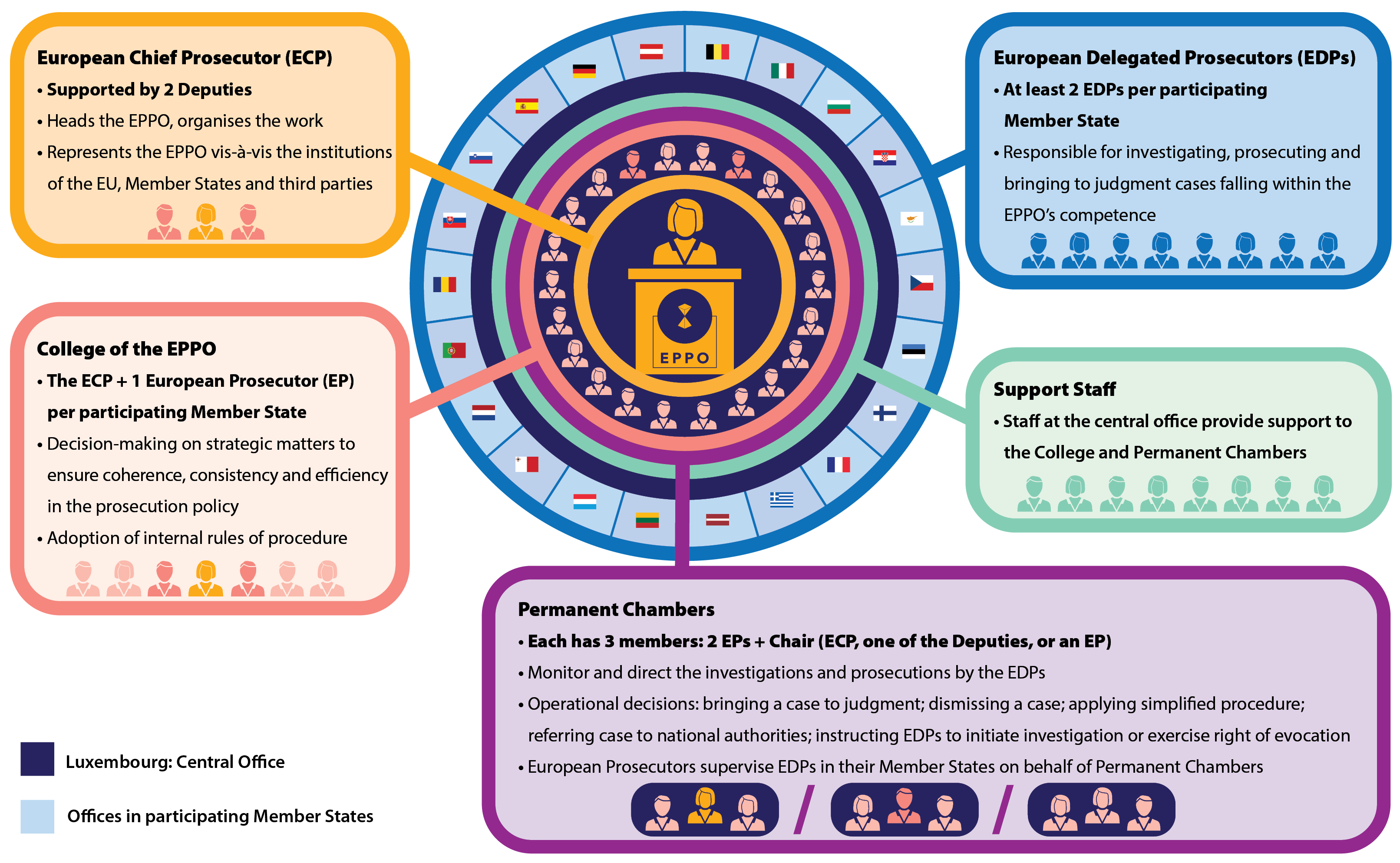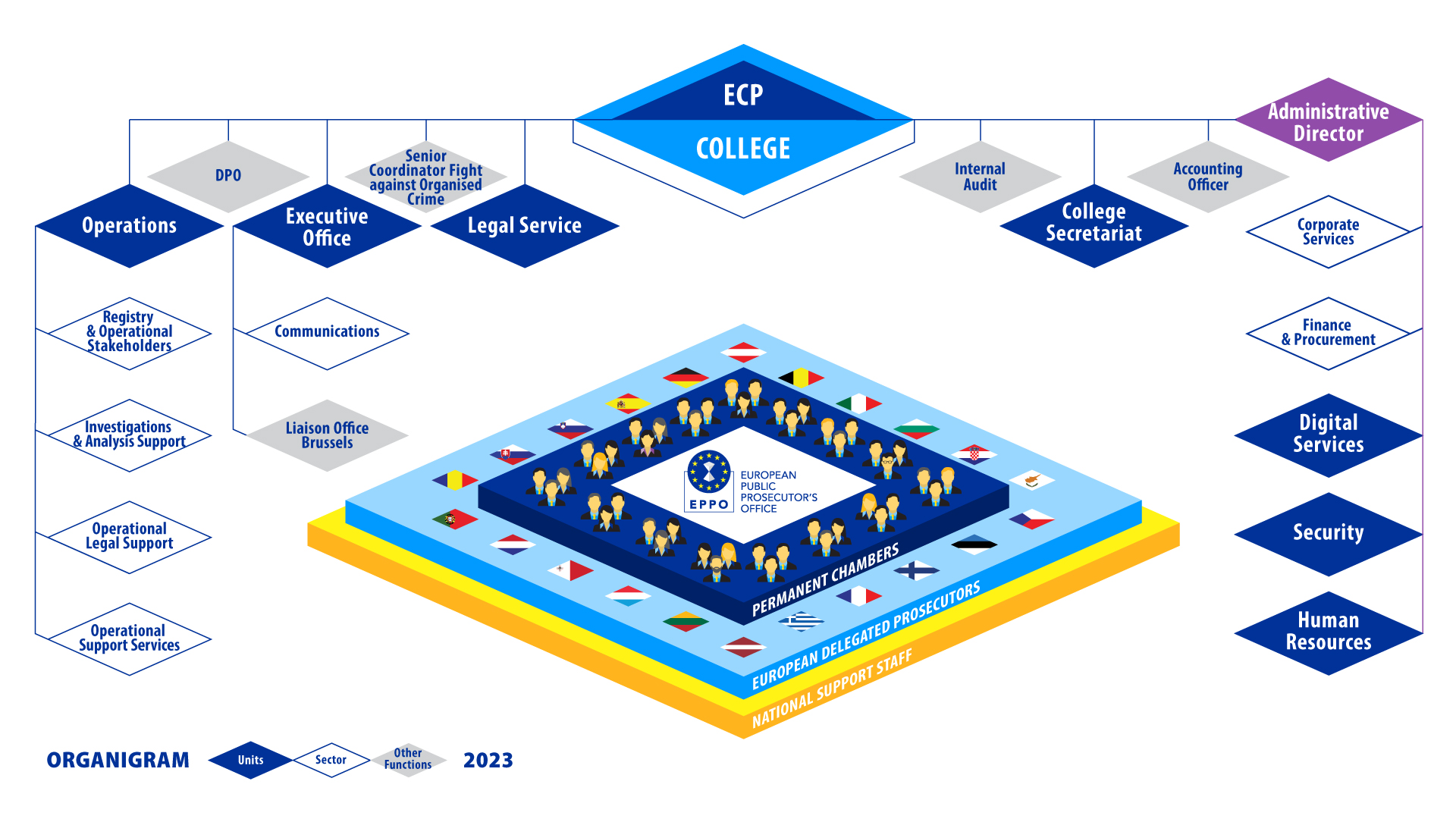The European Public Prosecutor’s Office (EPPO) operates as a fully independent single office across all participating EU countries (the so-called 'EPPO zone'), and combines European and national law-enforcement efforts. The administrative set-up of the EPPO has been finalised and the operational phase started on 1 June 2021.
Organisational structure
The EPPO is composed of two levels: the central level and the decentralised (national) level. Below you will find a chart, followed by a description, of its organisational structure.

Central office
The EPPO’s central level, with its headquarters in Luxembourg, consists of: the European Chief Prosecutor; 22 European Prosecutors (one per participating EU country), two of whom function as Deputies for the European Chief Prosecutor (currently, European Prosecutors from Germany and Czechia); and the Administrative Director. The European Chief Prosecutor and the 22 European Prosecutors constitute the College of the EPPO.
The European Prosecutors and the Administrative Director are assisted in their work by a number of experts in areas including administrative, technical, operational and legal-technical support.
Offices in participating Member States
The EPPO’s decentralised level consists of the European Delegated Prosecutors (EDPs) in the 22 participating EU Member States. The central level supervises the investigations and prosecutions carried out by the EDPs at the national level, who operate with complete independence from their national authorities.
Judicial review by national courts
The procedural acts of the European Public Prosecutor’s Office are subject to judicial review by the national courts. The European Court of Justice – by way of preliminary rulings or judicial reviews of the EPPO acts – has residual powers to ensure a consistent application of EU law.
Organisational chart of the EPPO
An additional graph below further explains the organisational structure of the EPPO and its central office in Luxembourg.

